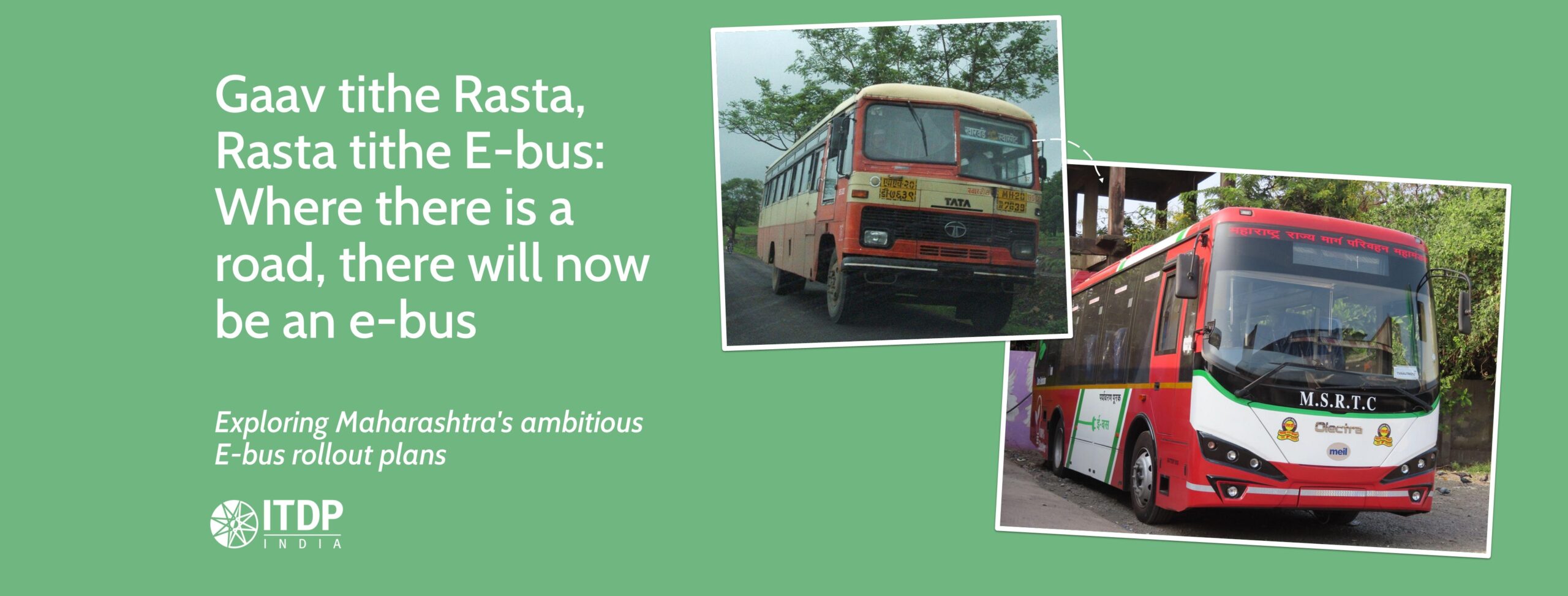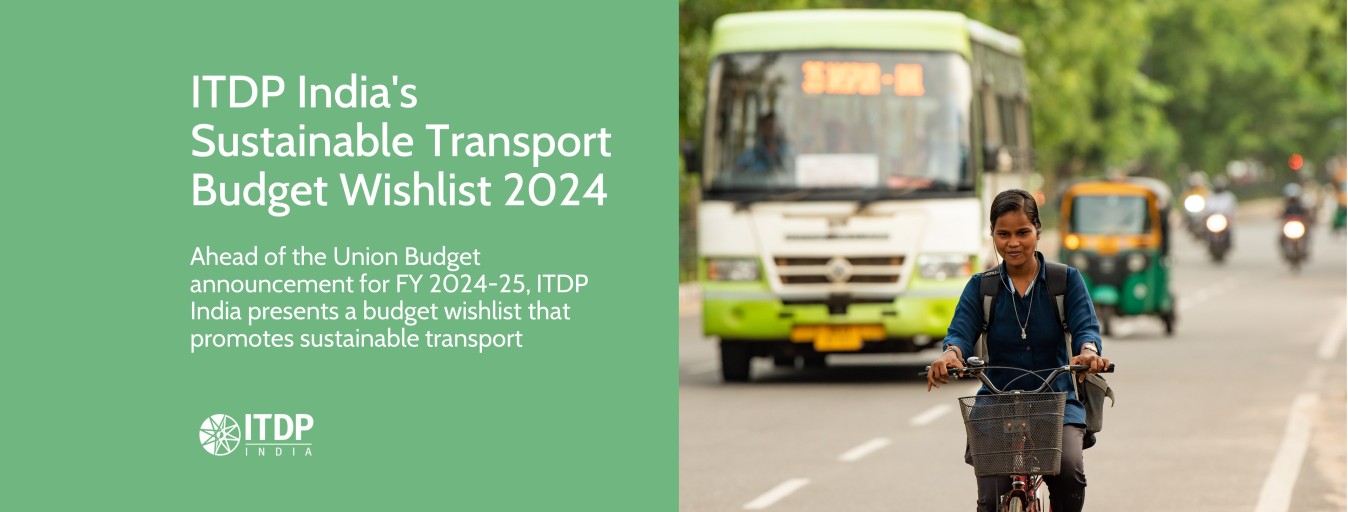Every single day, nearly 11 lakh citizens rely on Pune Mahanagar Parivahan Mahamandal Limited (PMPML) buses to move across Pune and Pimpri Chinchwad. For a service that’s just under 20 years old, this is no small feat. Despite fierce competition from private vehicles, the occasional pushback against dedicated bus lanes, PMPML has managed to carve out its space as a reliable, sustainable transport option.
Picture this: today, a Pune resident can board a PMPML bus, ride an electric bus on a dedicated BRTS lane, and pay a fraction of what other modes would cost. Few Indian cities can claim such progress. But this hasn’t happened overnight—over the last two decades, a series of strategic moves have strengthened PMPML’s presence, shaping Pune’s public transport network into what it is today.
However, the very gains that took years to build now face the risk of being undone. The city’s rapid growth demands more buses, better services, and continued investment—without which, PMPML’s ability to serve Pune’s people will weaken.
So, what were the key milestones in PMPML’s journey? Let’s dive in.
Here’s a look at this journey:
2007: PMPML Formed with BRTS
PMPML was formed in 2007 through the amalgamation of Pune Municipal Transport (PMT) and Pimpri Chinchwad Municipal Transport (PCMT), which previously operated as separate public transportation entities for Pune and Pimpri-Chinchwad, respectively. Pune and Pimpri-Chinchwad are sister cities with growing urban populations and expanding boundaries. This geographical proximity led to a significant overlap in bus routes and services offered by PMT and PCMT, often causing operational inefficiencies and commuter inconvenience. To address these challenges, PMPML was established as a unified public transport body to serve both cities as well as nearby towns and villages.
The formation of PMPML was further strengthened with streamlining the BRTS operations. Implementation of the Pune BRTS began in 2006, with Pune being the first city in the nation to adopt BRTS. The project was implemented on pilot stretches from Katraj to Swargate and Swargate to Hadapsar. The project was partially funded under JnNURM, which also led to development of footpaths and cycle tracks as part of the mandates for the funding. ITDP supported Pune Municipal Corporation (PMC) and Pimpri Chinchwad Municipal Corporation (PCMC) with the design of the BRTS corridors, as well as by creating awareness about the advantages of BRTS.
2015: Rainbow BRTS expands to more routes
After the success of BRTS in initial pilot routes, additional corridors were inaugurated in 2015. These were the Yerwada-Wagholi and Sangamwadi-Vishrantwadi in Pune, and Sanvi Phata-Kiwale and Nashik Phata-Wakad for Pimpri Chinchwad inaugurated in 2015.
ITDP was involved as a technical partner, guiding PMC and PCMC with refinements in the overall system, leading to consolidation of these corridors under the ‘Rainbow BRTS’ brand. This strategic branding created a unified identity for BRT services across the metropolitan region.
Rainbow BRTS since has been ahead of the curve as it introduced advanced features, including dedicated BRTS stations with automatic gates, GPS-enabled bus tracking (AVLS), level boarding, passenger information systems, off-board ticketing, and speed tables for pedestrian crossings. PMPML also established a state-of-the-art Transport Command and Control Centre to monitor performance and service levels. Today, the Rainbow BRTS network spans slightly over 60 kms. Its hybrid operational model enabled buses to bypass traffic congestion along dedicated trunk routes while maintaining route flexibility across non-BRTS corridors.

2018
Pioneer in Electric Buses
The next big milestone for PMPML was scripted in the year 2018 when PMPML further enhanced its service with the introduction of electric buses, setting a benchmark for sustainable urban mobility in India.
They were able to do this with financial support from the Pune Smart City Development Corporation who enabled the procurement of 150 e-buses, making Pune the city with one of highest number of e-buses in India back in 2018. This achievement was particularly noteworthy, as PMPML was not among the various transport undertakings selected under the FAME-I scheme. However, the experience gained paved the way for PMPML to secure financial support for 450 additional electric buses under the FAME-II scheme in 2019. ITDP has been actively assisting PMPML by providing technical support as required for the procurement of electric buses.
As it is well established now, e-buses are significantly more energy-efficient than Internal Combustion Engine (ICE) buses, with a 12-meter e-bus consuming just 1.3 kWh per km, compared to 2.82 kWh/km for diesel buses and 2.89 kWh/km for CNG buses. This makes electric buses nearly twice as fuel-efficient as their diesel and CNG counterparts.
In addition to efficiency, e-buses have matched the performance of CNG buses while recording fewer canceled kilometers. A passenger survey revealed that 75% preferred commuting on e-buses due to their superior ride quality, air conditioning, and reduced noise levels. Owing to these factors, PMPML is the only State Transport Undertaking (STU) offering air-conditioned services at standard fares. Since the operating cost of AC e-buses is lower than that of AC CNG buses, PMPML has been able to pass these cost savings on to its passengers. PMPML charges a fare of Rs 5 per km for both non-AC and AC buses. In comparison BEST which provides city buses services in Mumbai has a 20% higher fare for AC buses. (Rs 5 per km for non-AC Buses and Rs 6 per km for AC Buses. The daily passes also vary in fares, with Rs 50 and Rs 60 for non-AC and AC Buses, respectively.

One of the First STU to embrace Gross Cost Contract as way forward
Speeding up the electrification of fleet was adoption of Gross Cost Contract model by PMPML. The STU did so as a key component of its electric bus procurement strategy. Under this model, PMPML pays operators on a per-kilometer basis, while the operators provide buses, drivers, charging infrastructure, and maintenance. This arrangement shifts financial and operational risks away from PMPML, facilitating the rapid adoption of electric buses without significant capital expenditure. Pune’s pioneering implementation of the GCC model accelerated its transition to electric mobility and served as a reference for other Indian cities. Furthermore, PMPML continues refining its GCC framework, integrating lessons from past experiences.

2022: Integration with Metro
PMPML hosted a Foundation Week from 18th to 23rd April 2022, celebrating 15 years of its service. In the months following the Foundation Week, both Pune and Pimpri Chinchwad saw the introduction of Metro services. PMPML has since been actively collaborating with Maha Metro to integrate their services and enhance accessibility for citizens. BRTS stops along the Metro corridor were relocated near Metro stations, aligning with the exit points to facilitate seamless transfers for passengers between the two services. Additionally, PMPML introduced feeder routes to Metro stations to expand the Metro catchment area, further improving access. Information panels were installed at Metro stations to help passengers easily identify and use the feeder services. In fact it continues to support the citizens of Pune region as an analysis by ITDP India on how the Nigdi-Dapodi BRTS corridor and Pune Metro services, compliment each other’s service found that, despite presence of Metro, the Nigdi-Dapodi BRTS corridor serves 1.5 lakh passengers daily, with 37 buses per hour during peak times, one bus every 1.6 minutes. About 47% of users were students (18-25 years).

2024: All-in-One Transit App for Commuting and Seamless Ticketing Across any Public Transport mode
PMPML has consistently demonstrated a proactive approach to improving its services by collaborating with various agencies and stakeholders. One such collaboration which reaped productive results was through the Transport4All (T4A) challenge. As part of this, PMPML supported startups in developing innovative solutions for modern day challenges which state transport undertakings face. Pune nurtured and piloted three successful solutions, one of which led to the creation of the Apli PMPML app. Building on the multi-modal integration, this app offers digital services to PMPML users, including live tracking, ticket booking, route planning, and more. It also integrates with Maha Metro’s online booking portal, advancing the digital integration of Pune’s public transport system. The Apli PMPML App marks a significant achievement for PMPML considering the popularity and positive reviews of the app, hinting its successful implementation. The same is backed by the staggering 10 Lakh+ downloads of the app in a span of only 6-7 months.

Way forward
Pune and Pimpri Chinchwad have consistently proven themselves as leaders in public and sustainable transportation, setting a benchmark for cities across India. But as these cities grow, so too must their public transport systems. Maintaining ridership alone is no longer sufficient—the goal must be to significantly grow ridership. This calls for scaling up the fleet, upgrading service quality, and ensuring that capacity matches the region’s growing demand.
To truly meet the mobility needs of the future, operational efficiency must improve, and the passenger experience must be reimagined—with greater comfort, convenience, and safety at its core. Public transport must evolve from being merely a mode of mobility to becoming a seamless, enjoyable part of daily life for all residents.
As of 2025, in an industry-first, PMPML is set to incorporate qualitative benchmarks into its tendering process—prioritising service quality, operational efficiency, and commuter satisfaction. This strategic shift aims to elevate the passenger experience and reflects PMPML’s growing commitment to excellence. ITDP’s collaborative support has contributed to this evolution, providing technical insights and guidance throughout the journey.
Having supported PMPML since its early stages, ITDP remains a committed partner in this transformation—working together to deliver innovations and strategies that will help Pune Metropolitan Region emerge as one of the world’s most efficient, accessible, and environmentally responsible public transport systems.
As PMPML enters its third decade, can it keep up with Pune’s and Pimpri Chinchwad’s growing demands—and bring more people back to public transport? Stay tuned for the next part.
Written by Jagdish Temkar, Associate, Transport Systems, ITDP India
With Technical Inputs from Aditya Rane, Senior Associate – Transport Systems and Electric Mobility, ITDP India
Edited by Donita Jose, Senior Associate, Communication and Development, ITDP India






